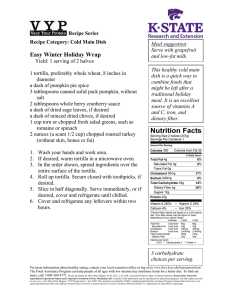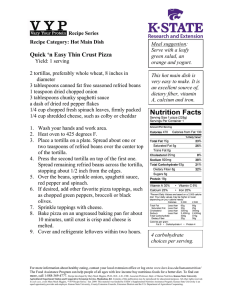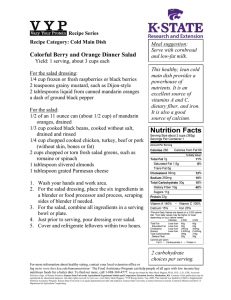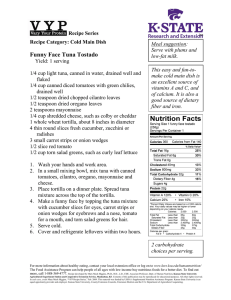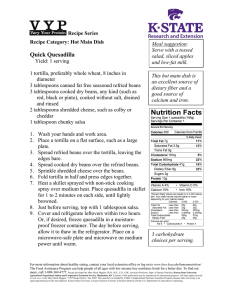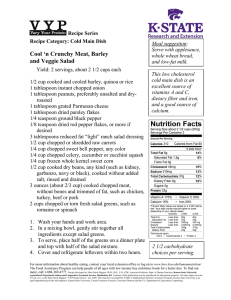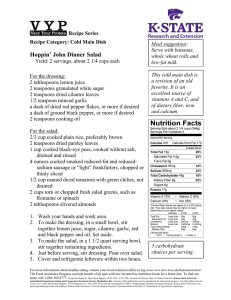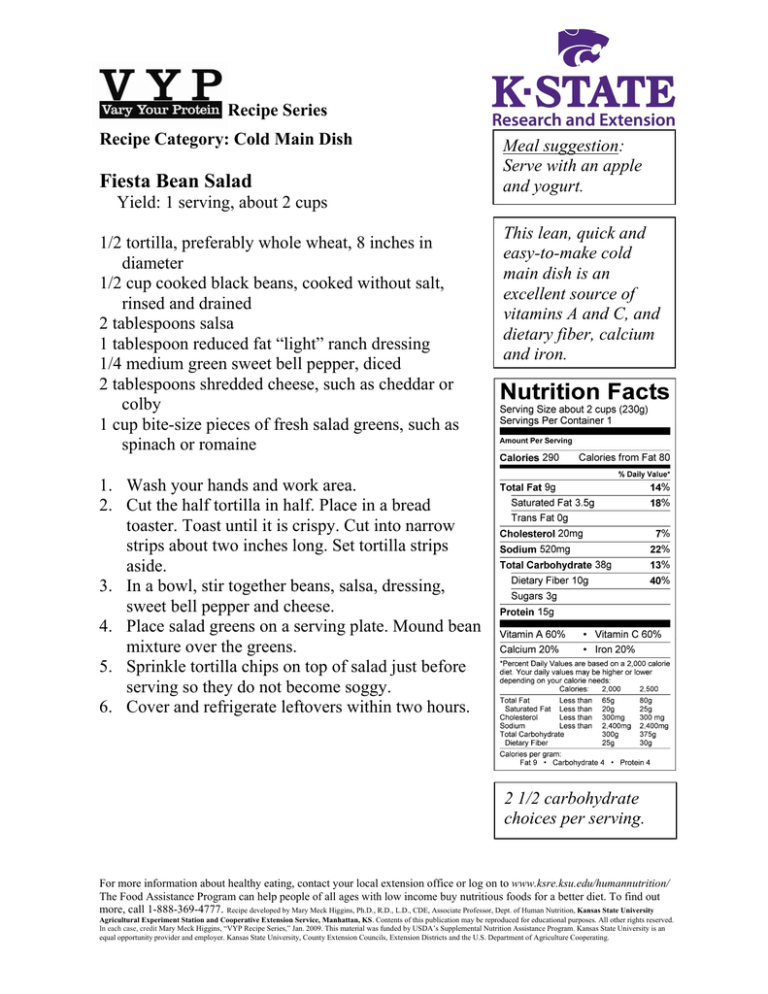
Recipe Series
Recipe Category: Cold Main Dish
Fiesta Bean Salad
Yield: 1 serving, about 2 cups
1/2 tortilla, preferably whole wheat, 8 inches in
diameter
1/2 cup cooked black beans, cooked without salt,
rinsed and drained
2 tablespoons salsa
1 tablespoon reduced fat “light” ranch dressing
1/4 medium green sweet bell pepper, diced
2 tablespoons shredded cheese, such as cheddar or
colby
1 cup bite-size pieces of fresh salad greens, such as
spinach or romaine
Meal suggestion:
Serve with an apple
and yogurt.
This lean, quick and
easy-to-make cold
main dish is an
excellent source of
vitamins A and C, and
dietary fiber, calcium
and iron.
1. Wash your hands and work area.
2. Cut the half tortilla in half. Place in a bread
toaster. Toast until it is crispy. Cut into narrow
strips about two inches long. Set tortilla strips
aside.
3. In a bowl, stir together beans, salsa, dressing,
sweet bell pepper and cheese.
4. Place salad greens on a serving plate. Mound bean
mixture over the greens.
5. Sprinkle tortilla chips on top of salad just before
serving so they do not become soggy.
6. Cover and refrigerate leftovers within two hours.
2 1/2 carbohydrate
choices per serving.
For more information about healthy eating, contact your local extension office or log on to www.ksre.ksu.edu/humannutrition/
The Food Assistance Program can help people of all ages with low income buy nutritious foods for a better diet. To find out
more, call 1-888-369-4777. Recipe developed by Mary Meck Higgins, Ph.D., R.D., L.D., CDE, Associate Professor, Dept. of Human Nutrition, Kansas State University
Agricultural Experiment Station and Cooperative Extension Service, Manhattan, KS. Contents of this publication may be reproduced for educational purposes. All other rights reserved.
In each case, credit Mary Meck Higgins, “VYP Recipe Series,” Jan. 2009. This material was funded by USDA’s Supplemental Nutrition Assistance Program. Kansas State University is an
equal opportunity provider and employer. Kansas State University, County Extension Councils, Extension Districts and the U.S. Department of Agriculture Cooperating.

